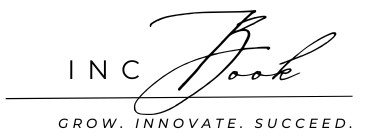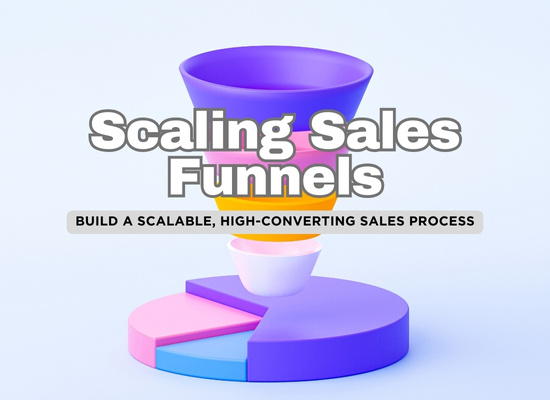In the fast-paced world of business growth, scaling your sales funnel is key to turning prospects into loyal customers. A well-structured, scalable sales funnel doesn’t just drive leads; it builds long-lasting relationships, improves conversions, and ultimately boosts revenue. Whether you’re a startup or an established business, refining your funnel for scalability is essential. Here are the first three steps to building a sales funnel that grows with your business.
1️⃣ Understand Your Audience’s Journey 🛤️
The first step in building a scalable sales funnel is understanding the buyer’s journey from awareness to decision-making. When you have a clear picture of the process, you can create targeted strategies at each stage.
- Map out the stages: Break down your funnel into key stages—awareness, interest, consideration, intent, and purchase. By understanding each stage, you can craft content and messaging that resonates with prospects and addresses their specific needs at every point.
- Create buyer personas: Get specific about your target audience. Develop detailed buyer personas based on demographics, behaviors, pain points, and needs. This will guide the development of content and messaging that speaks directly to your ideal customer.
- Personalize interactions: The more personalized the experience, the more likely a lead will move through your funnel. Use data and automation to customize your approach for different buyer personas, addressing their individual concerns and needs.
2️⃣ Automate for Efficiency ⚙️
A scalable sales funnel requires automation to handle an increasing volume of leads without sacrificing quality or efficiency. Automation can streamline repetitive tasks and allow your team to focus on high-value activities.
- Email marketing automation: Use email sequences to nurture leads. Automated emails can provide timely follow-ups, educational content, or exclusive offers, pushing leads down the funnel with minimal effort.
- CRM integration: Implement a CRM (Customer Relationship Management) system that integrates with your sales funnel. This allows you to track leads, score them, and trigger automated actions based on behavior, ensuring no potential customer slips through the cracks.
- Lead scoring and segmentation: Use lead scoring to automatically categorize leads based on their likelihood to convert. Segment your leads so you can tailor your approach based on where they are in the funnel. This helps prioritize resources and efforts for maximum impact.
3️⃣ Optimize Conversion Points 💡
To make your sales funnel scalable, you need to focus on optimizing the key conversion points—where prospects are turning from leads into customers. Small tweaks can make a big difference in scaling your success.
- Landing pages that convert: Ensure each stage of the funnel has a landing page designed to convert. Your landing pages should be simple, visually appealing, and aligned with the stage of the funnel the lead is in. A/B test headlines, CTAs, and design to identify what works best.
- High-value offers: Provide clear and compelling offers at each stage of the funnel, such as free trials, consultations, or downloadable content. These offers should be valuable enough to convince prospects to take the next step in their buying journey.
- Follow-up strategies: Use smart follow-up strategies, such as remarketing ads or personalized emails, to target leads that haven’t yet converted. Sometimes, it’s not about having more leads, but re-engaging the leads you already have.
4️⃣ Leverage Data and Analytics 📊
As you scale, it’s crucial to understand what’s working and what’s not. By leveraging data and analytics, you can make informed decisions, refine your funnel, and increase your chances of success.
- Track key metrics: Use analytics tools to track conversion rates, lead velocity, and customer acquisition costs. Identify trends and patterns to determine where prospects are dropping off and where you can improve.
- A/B testing: Constantly test different elements of your funnel—such as subject lines, landing pages, and CTA buttons. A/B testing allows you to make data-driven decisions and refine your funnel for better performance.
- Customer feedback loops: Collect feedback from customers to gain insights into why they converted and what obstacles they overcame. Use this information to improve your messaging and optimize the buyer’s journey.
5️⃣ Create Compelling Content 🎯
Content is the fuel that drives your sales funnel. The right content not only attracts leads but also nurtures them through the funnel stages. High-quality, relevant content keeps prospects engaged and positions your business as an authority.
- Tailor content to each funnel stage: Create content that aligns with the specific needs of your audience at each stage of the funnel. For instance, offer blog posts, eBooks, and social media posts during the awareness stage, and move to case studies, product demos, and customer testimonials in the consideration phase.
- Use storytelling to connect: People connect with stories, not just data. Share success stories, case studies, and testimonials that show how your product or service can solve your leads’ pain points. This builds trust and makes your business more relatable.
- Repurpose content: Maximize your content’s value by repurposing it for different formats and platforms. Turn blog posts into videos, infographics, or social media snippets to reach a wider audience while maintaining a consistent message.
6️⃣ Continuously Refine Your Funnel 🔄
A scalable sales funnel is never truly “done.” To ensure long-term success, it’s essential to continuously refine and optimize your funnel, adapting to changes in the market, buyer behavior, and your business growth.
- Analyze and iterate: Regularly review your funnel’s performance and identify areas for improvement. Is there a specific stage where leads are dropping off? Do certain offers perform better than others? Use these insights to make adjustments and improve your conversion rates.
- Adapt to customer feedback: As your business grows, so do your customers’ needs. Stay in touch with your target audience, whether through surveys, customer reviews, or social media engagement, and use their feedback to make informed adjustments to your funnel.
- Scale with confidence: As your funnel becomes more efficient, continue to scale by adding new features, offers, or strategies to increase lead volume without compromising the quality of your interactions. Automation and optimization allow you to grow your sales funnel while maintaining control over your processes.
7️⃣ Implement Effective Lead Nurturing 🧑🤝🧑
The relationship with your prospects doesn’t end after they enter the funnel. Nurturing leads is essential for guiding them to the point of purchase.
- Personalize communications: Use email sequences and dynamic content to personalize communication based on where the lead is in the funnel. Personalized emails or messages make prospects feel valued and understood, improving their engagement.
- Provide educational value: Continue educating your leads on your product’s benefits and how it solves their problems. Offer valuable resources such as webinars, case studies, or guides that help move them closer to making a purchase decision.
- Utilize drip campaigns: Automate your lead nurturing with drip email campaigns. These campaigns keep your leads engaged with a series of valuable, timely messages that lead them step-by-step through the funnel.
8️⃣ Align Sales and Marketing Teams 🤝
For your funnel to work effectively and scale, your sales and marketing teams must be aligned. Both need to work in harmony to move leads through the funnel smoothly.
- Create shared goals: Ensure both teams are aligned around common objectives, such as increasing lead quality and improving conversion rates. This can be achieved through regular meetings and collaboration on strategies.
- Share insights: Have sales teams provide feedback on the quality of leads, and encourage marketing teams to share insights about audience behavior. This back-and-forth communication will help both teams refine their approaches.
- Develop joint strategies: Coordinate strategies, such as content marketing and sales calls, so that both teams work towards a unified approach in nurturing and converting leads. This maximizes the chances of closing sales and improving the customer experience.
9️⃣ Use Social Proof to Build Trust 👥
Trust is essential in the sales process, and social proof—such as testimonials, reviews, and case studies—can help establish credibility and encourage conversions.
- Showcase customer success stories: Share stories of customers who’ve benefited from your product or service. Case studies with real data and tangible results are powerful tools for building trust.
- Leverage testimonials: Display reviews and testimonials from satisfied customers across key points in your funnel. Potential buyers are more likely to convert when they see positive feedback from others who were once in their shoes.
- Encourage user-generated content: Invite customers to share their experiences through photos, videos, or social media posts. This not only provides social proof but also fosters a sense of community around your brand.
🔟 Scale With Technology 🔧
As your business grows, your sales funnel must scale with it. Technology is your best ally in automating and optimizing this process, allowing you to handle more leads without sacrificing efficiency.
- Use funnel-building tools: Platforms like ClickFunnels, HubSpot, and Leadpages help automate funnel building and tracking, making it easier to manage and scale. These tools also allow for A/B testing, analytics, and CRM integration to streamline your efforts.
- Integrate artificial intelligence: AI-powered chatbots, predictive analytics, and automated email campaigns can help personalize interactions and predict buyer behavior, enhancing your funnel’s scalability.
- Focus on seamless user experience: Technology can also help improve the user experience across your funnel. Ensure your website, landing pages, and checkout process are optimized for mobile use and easy navigation to reduce friction and maximize conversions.
Building a scalable sales funnel is crucial for growing your business and converting leads into loyal customers. By understanding your audience, automating processes, optimizing conversion points, and utilizing technology, you can create a sales funnel that not only scales with your business but drives long-term success. Start implementing these strategies today, and watch your funnel evolve as your business grows!



